|
Draw a circle. Draw and extend the horizontal and vertical centerlines.
|
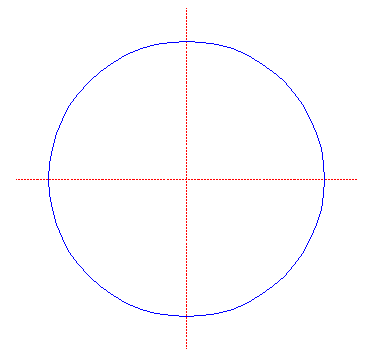
|
|
Construct the inscribed pentagon (regular 5-sided polygon) of circle 1, pointing up.
|
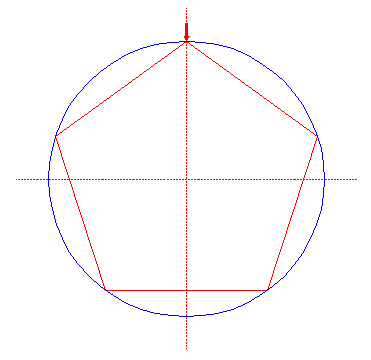
|
|
Construct the inscribed pentagram of pentagon 2, by drawing all its diagonals.
|
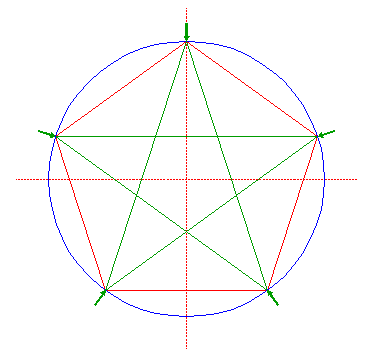
|
|
Construct the circumscribed pentagon of circle 1, pointing down.
|

|
|
Draw the five rays of pentagon 4, from the center of circle 1 to the angular points of the pentagon.
|

|
|
Construct the circumscribed pentagon of circle 1, pointing up.
|

|
|
Draw the five rays of pentagon 6.
|

|
|
Construct the circumscribed circle of pentagons 4 and 6.
|
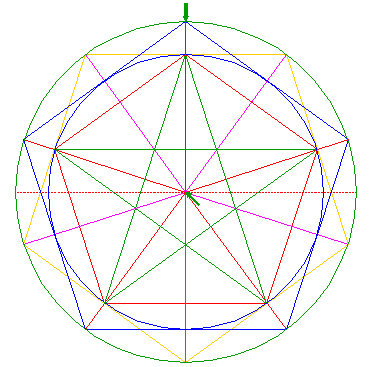
|
|
Construct the inscribed circle of the kite-shaped 4-sided polygon enclosed by the two upper rays 5 and the two sides of pentagram 3 connected to its upper angular point.
|
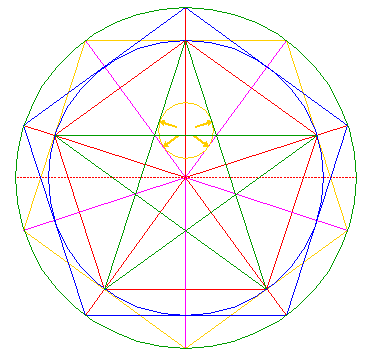
|
|
Copy circle 9 to the center of circle 1.
|

|
|
From the upper intersection of circle 9 and the vertical centerline, draw a horizontal line (parallel to the horizontal centerline) up to circle 8 to the right.
|

|
|
Mirror line 11 with respect to upper right ray 7, as shown.
|

|
|
Construct a circle, tangent to lines 11 and 12 and tangent to circle 8 at the inner side.
|
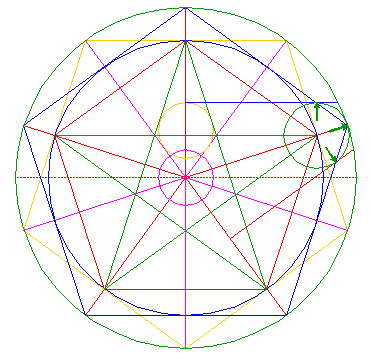
|
|
Repeat steps 10, 11, 12 and 13 with respect to the other rays 7, so that circle 13 is copied four times and evenly distributed around the center of circle 1.
|
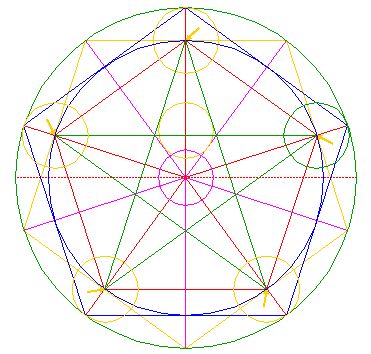
|
|
Construct a circle with its centerline between the upper intersections of circles 8 and 9 with the vertical centerline (of circle 1).
|

|
|
Copy circle 15 four times and distribute these evenly around the center of circle 1.
|

|
|
Copy circle 10 to the lower intersection of circle 1 and the vertical centerline.
|
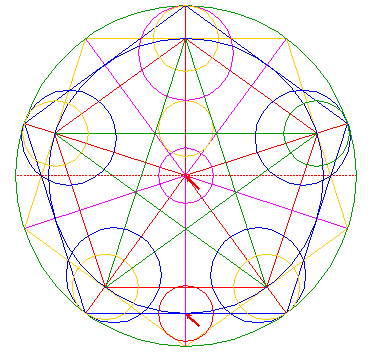
|
|
Construct a circle concentric to circle 1, passing through the intersections of circle 17 and the lower side of pentagon 6, see detail. |
 |
|

|
|
Construct a small circle concentric to circle 17, tangent to circle 18 at the near side.
|

|
|
Copy circle 19 to its upper intersection with the vertical centerline.
|
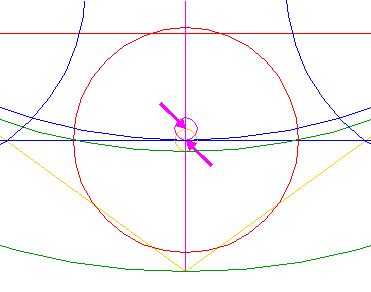
|
|
Construct two circles concentric to circle 1, passing through the upper intersections of circles 19 and 20 with the vertical centerline, see detail.
|

|
|

|
|
Copy circle 19 to the lower intersection of circle 10 and the vertical centerline. |

|
|
Copy circle 22 to its upper intersection with the vertical centerline.
|
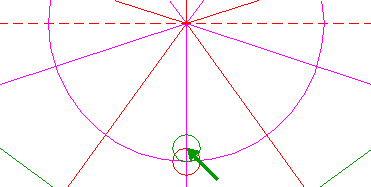
|
|
Construct two circles concentric to circle 1, passing through the upper intersections of circles 22 and 23 with the vertical centerline.
|

|
|
Copy circle 19 five times, to the angular points of pentagon 2, see detail.
|
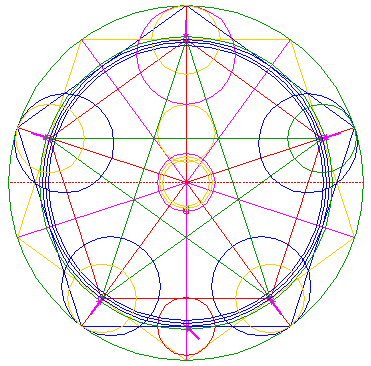
|
|

|
|
Construct a line, tangent to the leftmost and rightmost circles 25, both at the lower side, parallel to the corresponding side of pentagram 3. See also detail.
|

|
|
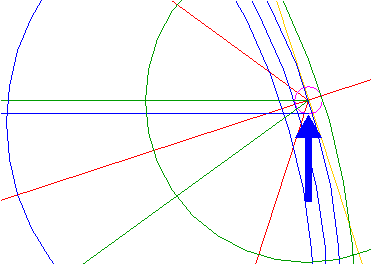
|
|
Repeat step 26 for the other corresponding pairs of circles 25 and sides of pentagram 3. |
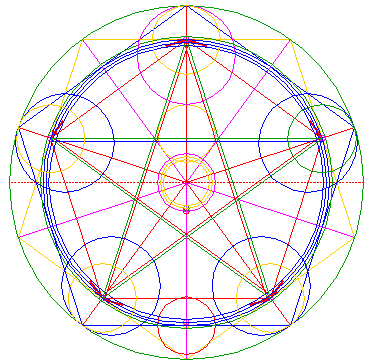
|
|
Construct a small circle with its centerline between the upper intersection of circle 19 and the lower intersection of circle 20 with the vertical centerline.
|

|
|
Copy circle 28 five times, the first to the intersection of the vertical centerline with the lower side of pentagon 2, the others to their respective intersections with this same side, two to the left, two to the right.
|

|
|
Construct four vertical lines (parallel to lower ray 5 and the vertical centerline), two passing through the left intersections of the left and middle circles 29, and two passing through the right intersections of the right and middle circles 29 with the lower side of pentagon 2, between the outer circle 21 (lower side) and the outer circle 24 (lower side). See detail.
|

|
|

|
|
Repeat step 30 with respect to the other rays 5.
|

|
|
Circles 1, 10, 13, 14, 15, 16, 18, 21 and 24, pentagram 3, and lines 26, 27, 30 and 31 make up the ingredients for the reconstruction.
|

|
|
Remove all parts not visible in the formation. |

|
|
Coloring green all areas corresponding to standing...
|
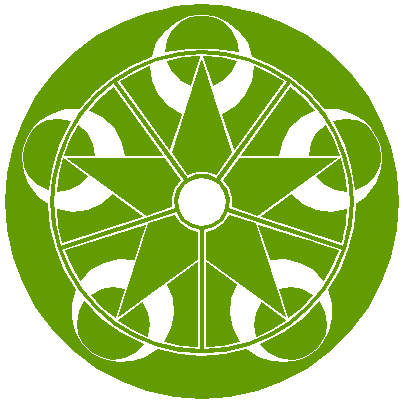
|
|
...or to flattened crop, finishes the reconstruction of the 2003 Avebury Trusloe formation.
|

|
|
The final result, matched with the aerial image.
|
 |